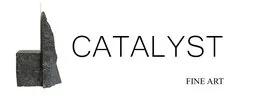
George Tsutakawa
Artist’s Statement
In the 1960s, Tsutakawa’s close friend and renown artist Mark Tobey, who had studied Asian sumi painting in China and Japan, encouraged Tsutakawa to use his talents to pursue Japanese painting techniques he had learned as a child in Japan.
With lively colors and ink drawn lines, Tsutakawa’s watercolors on paper often were painted on site, painting natural scenes of mountains, forests, or the sea.
Shi Shi painting photo taken by Joshel Namkung
Art-Furniture Design:
To furnish their home George designed and constructed clean-lined chairs, tables, and lamps, using plywood and bamboo. They were still in daily use more than 50 years later. The simple, handsome shapes and their sturdy functionality make it clear that he could equally well have chosen a career in furniture design. Some of his lamps were exhibited at the Studio Gallery in Seattle in 1947, as part of his first gallery exhibition.Biography
This biography of George Tsutakawa, the eminent Seattle painter, sculptor, and fountain maker, was written by his daughter, Mayumi Tsutakawa.
Beginnings
Tsutakawa was the second son of Shozo Tsutakawa, a prosperous businessman who came to Seattle in 1900 and owned an import-export business. George Tsutakawa was born on Federal Avenue in the Capitol Hill area and attended public school there until the age of seven when his father moved the family back to Japan. He attended school for 10 years in Okayama, but was a disinterested student, preferring to practice his drawing. As his father wanted him to pursue a business career, the two had a falling out and, at the age of 16, George was sent back to Seattle where he lived with relatives. He never saw his parents again.
George attended Broadway High School and studied with excellent art teachers. There he met other emerging Northwest artists such as Fay Chong and Morris Graves. He went on to receive his BFA degree at the University of Washington in 1937, all the while working in his relatives’ produce business at Rainier Avenue and Jackson Street.
The War Years
George was an active local artist, organizing and exhibiting in many local and national exhibitions, until the wartime when he volunteered for the U.S. Army. He spent most of the war years teaching Japanese language in Military Intelligence School in Minnesota. During the war, he was able to travel to the great museums of America, taking the train to New York and Chicago on his furloughs. But he also visited his sister’s family, interned at Tule Lake Camp in northern California. There, he was introduced to Ayame Kyotani, a student of Japanese dance and flower arrangement, who was to become his wife through an arranged marriage.
Returning to Seattle, he and Ayame married and eventually had four children and settled in a large, historic, and art-filled home in the Mount Baker district. He received his MFA and was recruited to a faculty position at the University of Washington, first teaching design courses in the School of Architecture, later teaching in the School of Art. A popular and generous-spirited professor, Tsutakawa was associated with the University of Washington for more than 30 years. Upon his retirement at the age of 67, he trekked in the Himalaya Mountains, climbing to an elevation of 14,000 without additional oxygen.
An Artist's Legacy
Tsutakawa’s professional art career spanned 60 years. At first, he used oil paints to explore abstract expressionist themes. Later, at the urging of his friend, the internationally recognized artist Mark Tobey, he began to explore his cultural roots and used sumi paint to depict natural scenes and sea life. After experimenting in wood and metal sculture, Tsutakawa became known for his more than 75 major bronze fountain sculptures set in public spaces in the U.S., Japan, and Canada.
Tsutakawa’s career was recognized with two honorary doctorate degrees, from Whitman College and from Seattle University. He also received achievement awards from the Emperor of Japan and from the National Japanese American Citizen’s League. Most of Tsutakawa’s four children and seven grandchildren are pursuing careers in art and music.Influences
In the 1960s, he began to travel. He went to Europe in 1963; to Mexico, especially the Yucatan, in 1964. He went to east and central Asia in 1969, as well as to Paris; from there, he and Ayame extended the trip to fly to Basel to visit Mark Tobey. Their chief recollection of the trip was of Switzerland's extreme cold (1999 Interview).
In 1977, he traveled to Nepal, where, on trek, he at last saw the stacked rocks of the obos whose forms had so long influenced his work. He saw them first at a place called Labouje, at an altitude of 16,000 feet. Seeing more than 20 such piles against a backdrop of Mount Everest was, he later said, the most exciting experience of his life (1984 Interview).Awards
In 1981, the Emperor of Japan presented him with the Order of the Rising Sun Award, Fourth Class. University of Washington named him Alumnus Summa Laude Dignatus 1984. He received honorary doctorates from both Whitman College, in Walla Walla, and Seattle University in 1986. Unfortunately, his father was no longer alive to appreciate the honors heaped on the son of whom he had once despaired.
After a 34 year teaching career at University of Washington, part of that time in the school of architecture, he became Professor of Art Emeritus. Even then, he continued to teach classes in sumi painting. He had a reputation among students as a kind person and a generous grader.Website
Showing all 10 artworks










